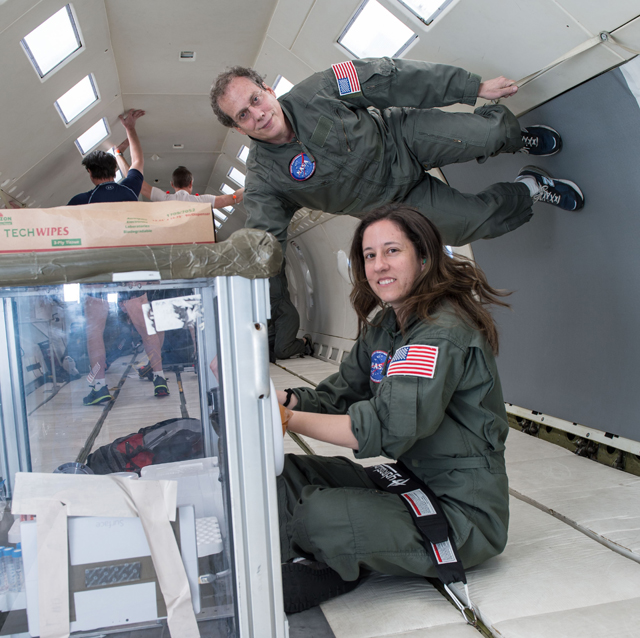How does spaceflight change the human body? Scientists have known for many years that traveling to space leads to cellular changes. Spaceflight can weaken bones, suppress the immune system, damage DNA and potentially contribute to cancer.
A unique study of identical twins seeks to expand our knowledge of the impact of space travel on the human body. As part of the NASA Human Research Project Twins Study, astronaut Scott Kelly returned home in March 2016 after spending nearly a year living aboard the International Space Station. Throughout that year, he was able to collect blood samples and send them back to Earth. Meanwhile, his identical twin, Mark, also gave blood samples, serving as an experimental, Earth-bound control. Scientists could then run the same tests on Scott’s and Mark’s samples and compare the results. A difference between the twins’ results — or alternatively, a change in Scott’s results during spaceflight that returned to baseline measurements when he returned to Earth — could point to previously unrecognized effects of spaceflight on the human body.
The preliminary results of 10 different projects ranging from fields as broad as immunology to cognitive sciences were recently presented at NASA’s Investigators’ Workshop, held Jan. 23 to 27 in Galveston, Texas. Scientists reported that spaceflight altered the levels of inflammatory markers, increased the length of telomeres (repetitive DNA sequences that protect the ends of chromosomes) and shifted the populations of commensal bacteria that make up the gut microbiome, among other findings.
One project of particular interest to the Johns Hopkins community is that of investigator Andy Feinberg and postdoctoral fellow Lindsay Rizzardi. They are investigating whether spaceflight leads to epigenomic changes, or changes to how DNA and DNA-associated proteins are modified in a cell. Whereas the DNA sequences of identical twins like Scott and Mark Kelly are the same, modifications to the DNA or its packaging proteins may differ due to environmental factors and reflect changes in gene activity.
Rizzardi and Feinberg found that the genomewide level of DNA methylation — the addition of a methyl group at specific sequences — decreased in Scott while he was in space and returned to his baseline measurements after returning to Earth. Scott’s methylation patterns also showed more epigenetic “noise,” or variability, in space. According to Rizzardi, these results may suggest that “the epigenome can respond to conditions in space to allow more flexibility in gene expression to cope with this extreme environment.” She is now integrating her data with other investigators’ data sets — including measurements of gene expression, metabolomics and telomere length — to understand the effects of changes in DNA methylation on a systems biology scale. Rizzardi was drawn to this project because “it is the first time human genomics research has been conducted in space” and hopes that this research will “open the door to genomics research being conducted by NASA on a broader scale in the future.”
Rizzardi, Feinberg and others have also pioneered ways to perform basic laboratory techniques, including DNA sequencing, in space. In August 2016, astronaut Kate Rubins successfully sequenced DNA samples on the International Space Station that were prepared on Earth. Future astronauts may be able to prepare and test their own samples at microgravity. They can then use these techniques to collect further data on the effect of spaceflight on the human body or better understand and be able to diagnose illness on long space missions. Ultimately, a hope is that this technology could even be used to identify extraterrestrial life forms that have DNA.
Related Content
- Learn more about the Andrew Feinberg Laboratory
- Biomedical Science at the ‘Final Frontier’
- Johns Hopkins Researcher Chosen By NASA to Study the Effects of Spaceflight on the Body
- Jumping Genes and Cancer?
